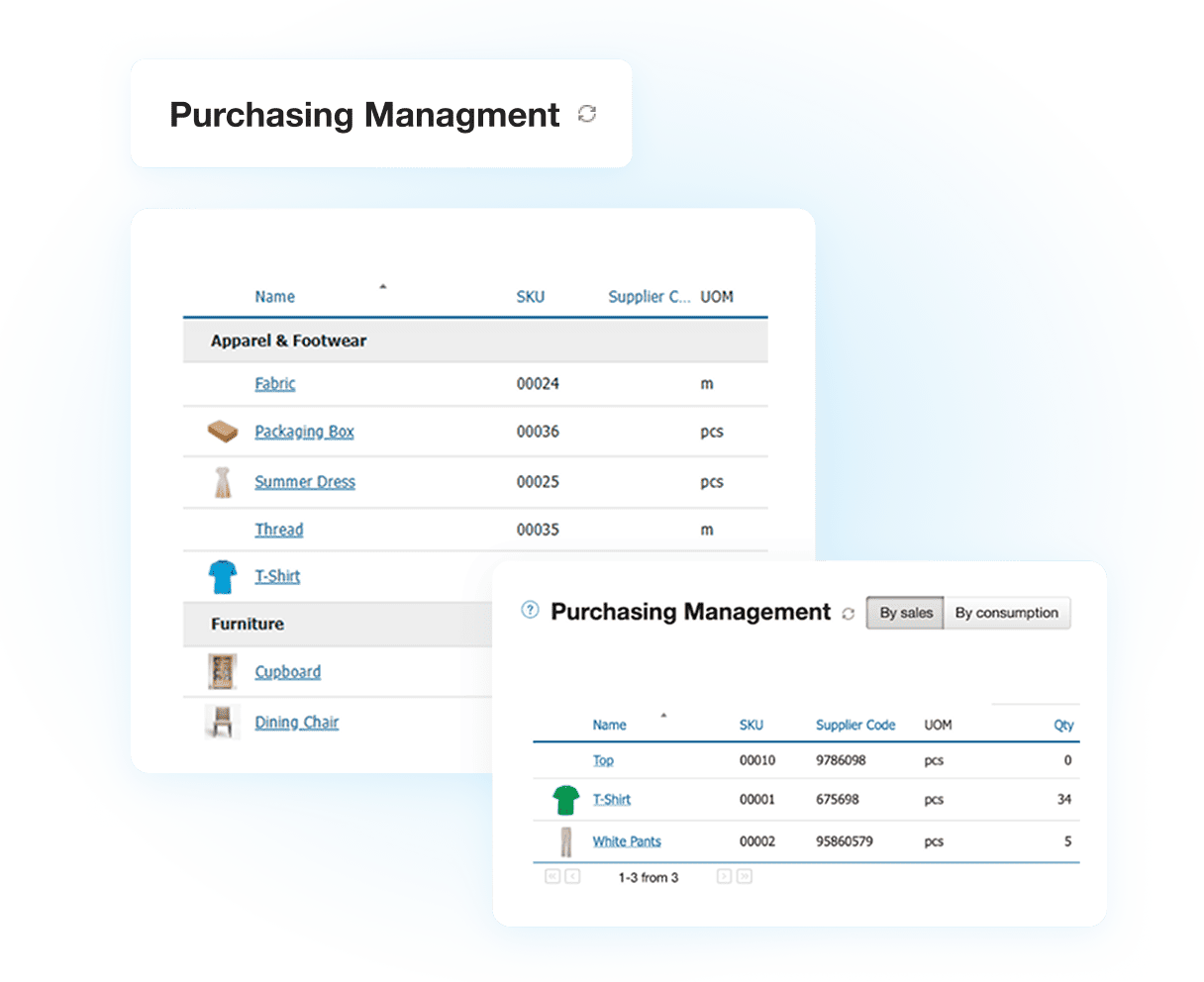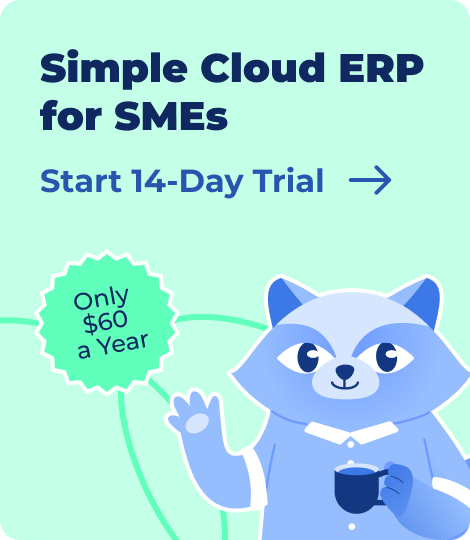Procurement software helps South African companies stop drowning in spreadsheets, messengers, emails, and even paper notebooks. It enables businesses to control spend, ensure timely supplies, track unpaid invoices, identity best-performing vendors, and stay audit-ready. The system lets finance, operations, and procurement teams work from the same source of truth. For South African SMEs, the usual results are faster cycle times, fewer errors, and measurable savings in ZAR.
- What Is Procurement Software?
- Why South African Businesses Need Procurement Software
- Key Evaluation Criteria for Procurement Software in South Africa
- Leading Purchasing Solutions in South Africa
- Implementation Best Practices & Common Pitfalls
- South African Use Cases & Success Stories
- ROI & Business Case for Procurement Software in South Africa
- Future Trends in Purchasing Software
- Roadmap & Buyer Checklist
- Frequently Asked Questions about Procurement Software in South Africa
- List of Resources
What Is Procurement Software?
Procurement software is a system to plan, request, approve, order, receive, and pay for goods and services. It replaces ad-hoc tools with real-time purchase tracking — from requisition to invoice payment.
Key Features
- Requisitions & catalogs: guided buying, pre-approved items/services, budget checks
- Approvals & policies: multi-level, role-based rules, thresholds in ZAR, audit trails
- Purchase orders (POs): PO creation from approved reqs, vendor terms, delivery dates, GRN linkage
- Supplier management: onboarding, performance scoring, risk flags, document expiry alerts
- Invoice automation: OCR, duplicate detection, VAT validation, posting to accounting/ERP
- Spend analytics: dashboards by category/vendor/cost centre, maverick-spend detection
- Integration & APIs: ERP/accounting (GL, vendors), inventory (GRN/stock), SSO, audit exports
Purchasing Software vs ERP vs Accounting Module
| Feature | Purchasing Software | ERP Purchasing Module (e.g. Kladana) | Accounting Module |
| Main focus | Specialized procurement control | Unified purchasing linked with inventory, sales & finance | Financial tracking & reporting |
| Supplier management | Advanced onboarding & scoring | Centralized vendor records synced with stock & orders | Vendor ledger only |
| Approvals & policies | Custom, rule-heavy workflows | Practical approval chains tied to real operations | Not supported |
| Contracts | Stand-alone contract tools | Linked to purchase orders & invoices for full traceability | Not included |
| Analytics | Category & spend dashboards | Real-time insights across spend, stock, and cash flow | Financial statements only |
| User experience | Tailored for procurement teams | Intuitive, cross-departmental interface | Finance-oriented |
| Integration | Connects with ERP / accounting | Natively integrated inside ERP — no middleware needed | Receives data from ERP |
| Deployment | Mostly cloud (SaaS) | Cloud-based or hybrid for SMEs | Within ERP or standalone finance suite |
Why South African Businesses Need Procurement Software
Let’s make a quick overview of why local companies are accelerating digital procurement adoption — and what drives this shift.
Challenges
South African SMEs face recurring challenges with manual procurement, spend leakage, weak financial control, and poor auditability.
- The Methodology for Assessing Procurement Systems (MAPS) report identified weak oversight, fragmented systems, and limited capacity in supply chain units — particularly at provincial and municipal levels.
- Public procurement reviews and Auditor-General South Africa (AGSA) data show frequent deviations from prescribed procedures and contract expansions that bypass competitive bidding. AGSA also classifies procurement and contract management among the highest-risk areas for fraud and financial loss.
- In its Procurement Watch Report, the non-profit Corruption Watch documented recurring abuses — from collusion and false claims to mid-execution contract changes and supplier debarments.
Digital procurement software can close these gaps by enforcing workflows, logging every decision, blocking unauthorized spending, and flagging deviations in real time.
Trends in South Africa
Key tendencies shaping procurement in South Africa include digital adoption, cost pressures, and compliance demands.
- The public sector is under growing pressure to modernize procurement and professionalize supply chain roles, as recommended by the MAPS report.
- According to Duja Consulting’s paper Reforming the Procurement Process, the upcoming Public Procurement Bill aims to consolidate fragmented rules, strengthen oversight, and improve transparency.
- Private and public organizations alike operate under tighter margins, inflation, currency volatility, and Broad-Based Black Economic Empowermen (BBBEE) compliance requirements, which push them toward tighter spend control and supplier visibility.
South Africa’s Software Market Is Expanding
This digital shift is reinforced by the country’s broader software market expansion.
- According to Grand View Horizon, the procurement-as-a-service market in South Africa is projected to grow strongly: from about USD 65.9 million in 2024 to over USD 200 million by 2033 (CAGR ~14%).
- More broadly, South Africa’s software and cloud services market continues to grow, creating favorable conditions for SaaS and enterprise platforms.
- As digital maturity increases, more organizations are adopting integrated systems that connect procurement, inventory, and finance into one data flow.
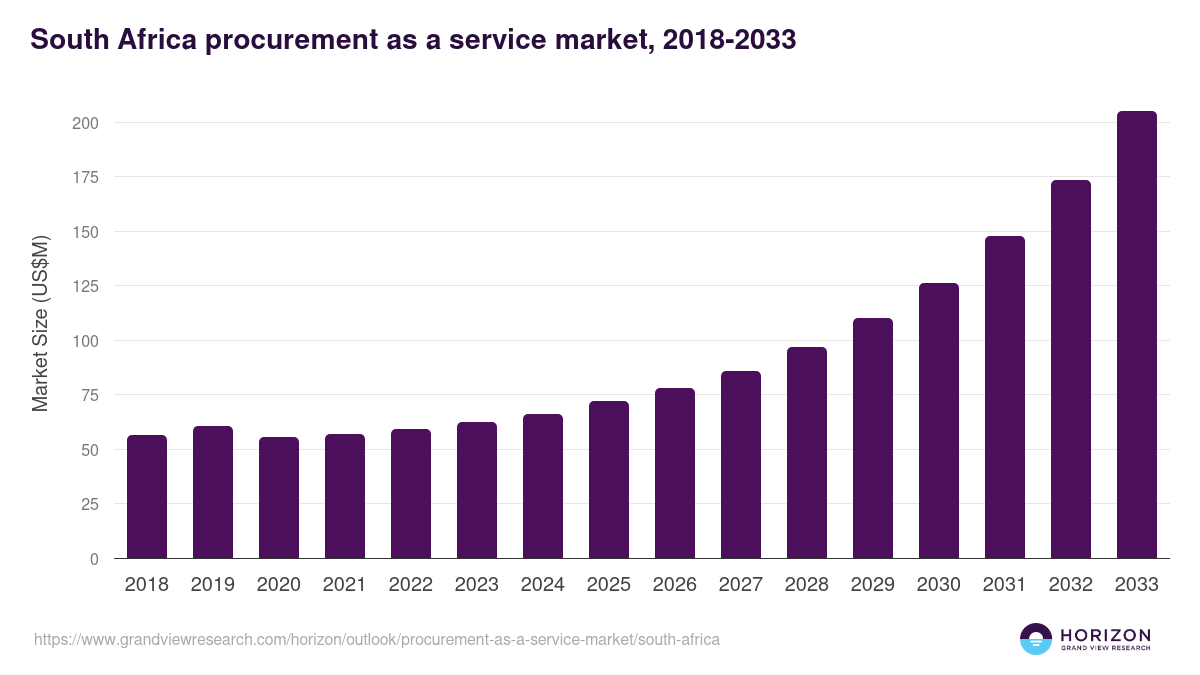
Source: Grand View Horizon
Key Evaluation Criteria for Procurement Software in South Africa
When shortlisting vendors, South African companies should focus on compliance fit, integration ease, and overall cost efficiency.
1. Localization
Support for ZAR, local VAT rules, POPIA data protection, and compliance with Public Procurement Act and BBBEE requirements.
2. Supplier management
Digital onboarding with Know Your Customer (KYC) and BBBEE docs, vendor scoring, expiry alerts, and access to verified local supplier data.
3. Integration
Sync POs, invoices, and payments with ERP, finance, and inventory systems. With Kladana connectors & API, integration stays simple and consistent across all departments.
4. Deployment options
Choose between cloud (SaaS) for flexibility or hybrid/on-premise for data control in regulated sectors.
5. Local support
Prefer vendors with presence in Johannesburg, Cape Town, or Durban to ensure faster onboarding and compliance alignment.
6. Scalability & security
Role-based access, audit trails, and customizable workflows that grow with your business.
7. Cost & ROI
Evaluate full ownership cost — license, setup, training — and expected ROI within 6–12 months through reduced manual work and spend leakage.
📘 Recommended Read: Curious how ERP supports business growth and compliance across South Africa? Read ERP Software in South Africa 2025: Top Solutions & Pricing before choosing your procurement or inventory platform.
Leading Purchasing Solutions in South Africa
The local procurement software landscape includes both global SaaS tools and home-grown ERP systems tailored for South African compliance. Below is an overview of key players.
| Vendor | Pricing | Core Procurement | Supplier Management | Contract Management | Localization (ZAR / VAT) | Ideal For |
| Kladana | $60–748+ a year | ✅ | ✅ | ✅ Basic | ✅ Full | SMEs, manufacturers |
| ProcureSense | No public info | ✅ | ✅ Advanced | ✅ | ✅ Full (SA-built) | Public sector, large orgs |
| Oxalys | No public info | ✅ | ✅ Advanced | ✅ | ✅ Partial | Enterprises |
| Precoro | $5,988–11,988+ a year | ✅ | ✅ | ✅ | ⚙️ Basic | SMEs, startups |
| Sage | $702–1,994+ per user a year | ✅ Basic | ❌ | ❌ | ✅ Full | Small businesses |
| Xero | $310–686+ a year | ✅ Basic | ❌ | ❌ | ✅ Full | Microbusinesses |
| Embrace ERP | No public info | ✅ | ✅ | ⚙️ Add-on | ✅ Full | Manufacturing firms |
🔵 Kladana — Purchase Order Software
Light ERP for SMEs combining purchasing, inventory, and finance. Supports ZAR, VAT, and real-time stock visibility.
Strengths: localized tax logic, approval chains, affordable pricing.
🟠 ProcureSense
Local procurement and spend management platform built for PFMA and BBBEE compliance.
Strengths: strong public-sector alignment, supplier diversity tracking, configurable dashboards.
🟣 Oxalys
Comprehensive procurement suite for mid-to-large enterprises.
Strengths: sourcing, contract, and supplier risk modules; solid analytics; scalable SaaS.
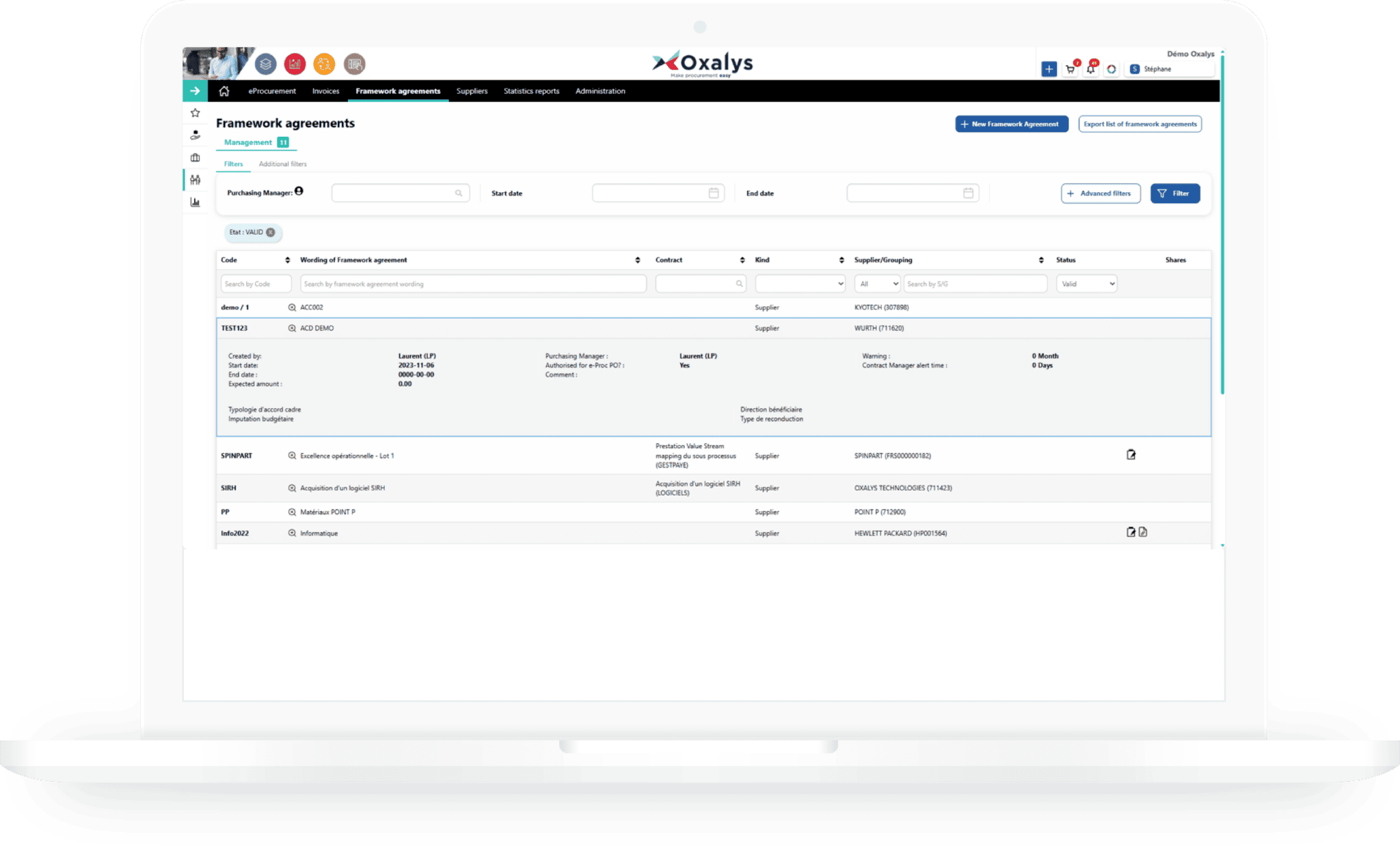
🟡 Precoro
Global SaaS solution for small to medium teams.
Strengths: quick PO creation, approvals, and budget control; integrations with Xero, QuickBooks, and NetSuite.
Limitations: costly.
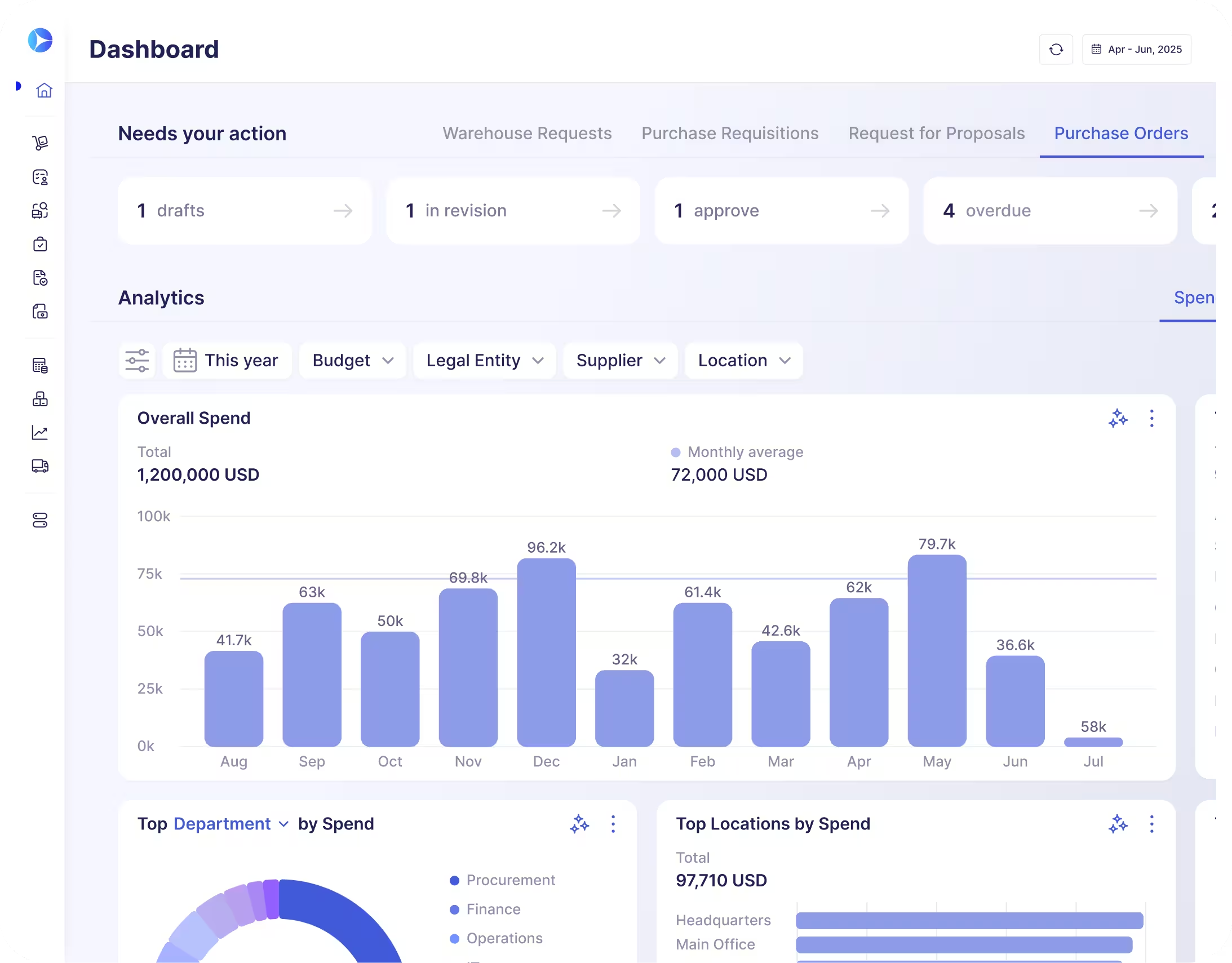
🟢 Sage Business Cloud Accounting
Accounting suite with built-in PO management for small businesses.
Strengths: simple workflows for creating, tracking, and reconciling purchase orders with invoices; strong local support.
Limitations: lacks supplier scoring and contract tracking.
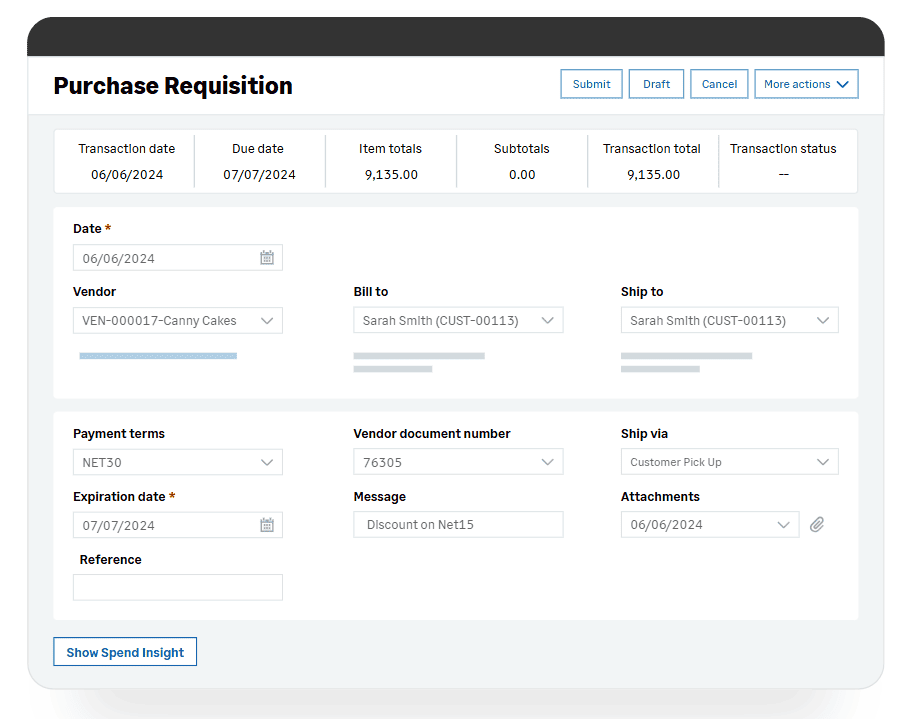
⚫ Xero
Cloud accounting platform offering basic PO and billing tools.
Strengths: easy to use, integrated with online invoicing and payment gateways.
Limitations: not designed for complex procurement or multi-level approvals.
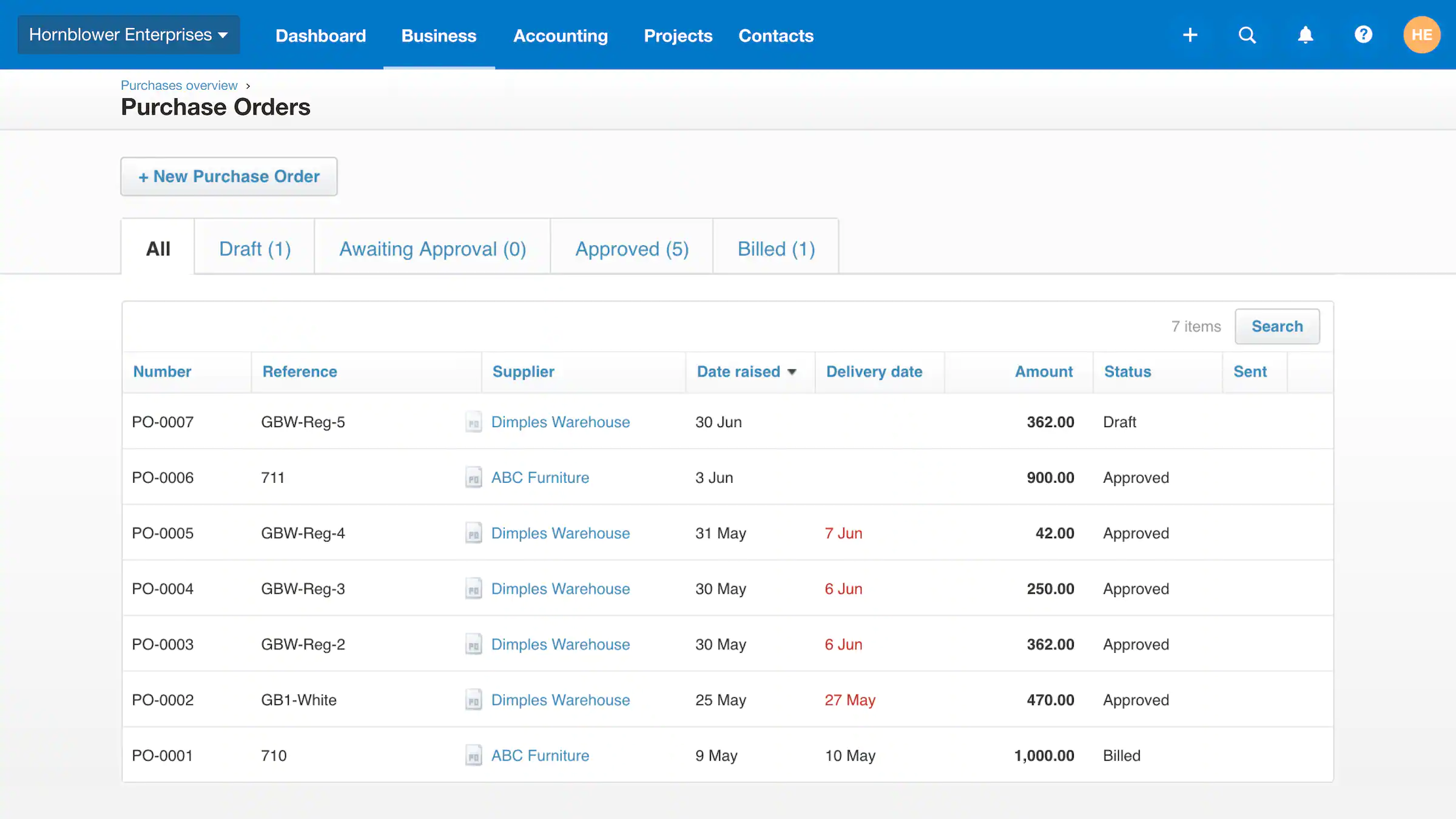
🟤 Embrace ERP
Local ERP solution covering procurement, inventory, and production.
Strengths: full manufacturing integration, local support.
Limitations: higher TCO, longer rollout.
Implementation Best Practices & Common Pitfalls
Choosing the right platform may seem tough — but implementing it can be even more challenging. Without structure, the process quickly drains time and budget. Below are proven practices and common pitfalls South African teams should watch out for.
Stakeholder Alignment & Change Management
- Engage finance, operations, and IT early — misalignment between departments is the main cause of rollout delays.
- Define clear ownership: who approves, who controls budgets, who audits.
- Clarify responsibilities and escalation paths — who has the final say when issues arise.
Data Migration & Supplier Onboarding
- Clean supplier data before import: remove duplicates, verify tax numbers, ensure BBBEE and KYC docs are valid.
- Use phased onboarding — start with top 20% of suppliers by spend.
- Automate document requests and expiry alerts from day one.
Integration Architecture & API Strategy
- Plan integrations early — especially with ERP, accounting, and inventory systems.
- Ensure full synchronization of POs, invoices, and payments, not just surface-level data exchange. Pay attention to how exactly an integration works. Some integrations support only basic actions and workflows without going deep.
- Test bidirectional data flow to prevent duplication and mismatched ledgers.
- Avoid: manual CSV imports as a long-term workaround.
📘 Recommended Read: Looking for a simpler way to manage stock across branches and warehouses? Explore Inventory Software South Africa: Best Solution for Small Businesses — learn how real-time tracking helps reduce losses and improve order accuracy.
Pilot vs Full Rollout
- Start with a pilot project — one department or region — to validate workflows and KPIs.
- Measure approval time, error rate, and user adoption before scaling.
- Move to full rollout once users consistently follow the new processes.
Training, Adoption & Governance
- Start by learning the system on your own — use help guides and vendor support. Note that some providers charge extra for onboarding and staff training.
- Deliver short, role-based sessions for requisitioners, approvers, and finance staff.
- Keep quick reference guides inside the system (help pop-ups, tooltips).
- Run short surveys to check user confidence and adoption speed. Don’t ignore employees’ feedback — they will use the software on the daily basis.
- Establish governance rules: audit frequency, access levels, and approval authority.
South African Use Cases & Success Stories
Here are real-world examples of how procurement software South Africa enables local companies to streamline purchasing, cut manual work, and gain full visibility across operations.
🧵 Body Motion — From Spreadsheets to Smart Purchasing
Industry: Sportswear and Medical Scrubs Manufacturing
Location: Johannesburg, South Africa
Founder: Riëtte Meyer
Managing purchases and raw materials was one of Body Motion’s biggest challenges. Riëtte sourced fabrics and haberdashery from suppliers across Johannesburg, Durban, and Cape Town — ordering 300+ meters per batch to qualify for free delivery. Without proper visibility, Excel could no longer keep up.
“I had so many zips — different sizes, colours, types. I couldn’t keep track in Google Sheets anymore. We were double buying stock because we didn’t know what we had.”

The Shift to Kladana ERP
Riëtte followed a clear four-step implementation plan — one module at a time:
- Uploaded inventory data and organized storage bins down to every button and zipper.
- Set up Bills of Materials (BOMs) and production routings.
- Migrated all customer and supplier contact details.
- Connected Purchase and Sales Orders with production workflows — ensuring every purchase was aligned with actual demand.
Results
- Real-time visibility across fabrics, accessories, and finished goods
- No more duplicate purchases or missing items
- Purchasing fully tied to production and supplier invoices
- Daily use of Inventory and Purchase Order modules to plan and replenish stock efficiently
Key takeaway
Body Motion’s step-by-step approach shows that even small South African manufacturers can digitize procurement and achieve full operational control — without the complexity of large enterprise systems.
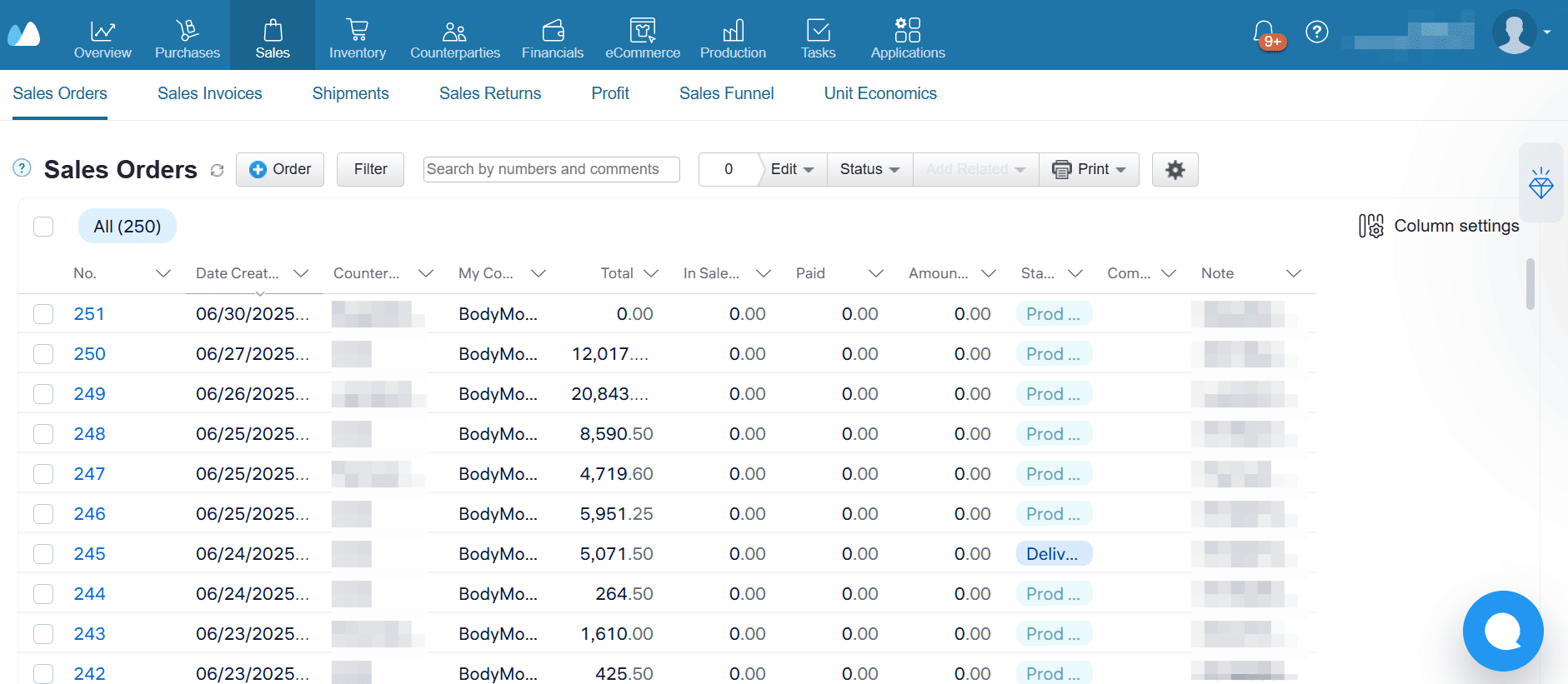
🚚 Bolloré Transport & Logistics
Industry: Logistics & Warehousing
Location: South Africa
Bolloré implemented purchasing software to centralize spending across 12 locations.
- Started with a pilot warehouse to validate workflows
- Rolled out to 82 users across branches
- Achieved visibility and control over multi-branch spending, automated purchase workflows, and 3-way matching
- Reduced manual tasks and consolidated procurement into a single interface
🚛 Powertrain Truck Spares — Automated Procurement for 4 000 Parts
Industry: Truck spares & distribution
Location: Rivonia, South Africa
Powertrain distributes over 4,000 line items monthly and implemented ERP with auto-procurement and forecasting to cut manual order prep.
- Reduced shipment-ordering time by 75%
- Achieved 100% order fulfilment and zero stock-outs
- Cut overnight-courier costs by 30%
- Lowered working capital by ≈ 5%
Control Purchasing, Stock & Cash Flow — All in One System
Kladana brings together procurement, inventory, and finance — so every purchase, approval, and payment stays in sync
✅ Create and track purchase orders in seconds
✅ Manage supplier data and documents in one place
✅ Monitor spending and inventory levels in real time
ROI & Business Case for Procurement Software in South Africa
Procurement software in South Africa doesn’t just digitalize purchasing — it reshapes how South African businesses control spend, ensure compliance, and unlock working capital.
Cost Drivers
The total cost of ownership (TCO) typically includes four key areas:
- Licensing or subscription: cloud systems usually range from $60 to $250 per user per month, depending on system scale and modules.
- Implementation: setup, data migration, and configuration — typically $1 500–7 500 one-time for SMEs.
- Training & onboarding: vendor-led sessions cost around $250–1 000, depending on team size.
- Support & maintenance: included in SaaS plans or billed at 10–20% of annual license cost for on-premise deployments.
💡 Cloud-based procurement software remains the most cost-efficient model for South African SMEs — minimal hardware, quick setup, predictable spend.
Benefit Levers
Most organizations justify investment in purchasing software through measurable efficiency and control improvements:
- Reduced maverick spend: automated approvals and budget limits cut unauthorized buying by 10–25%.
- Process efficiency: approval cycles drop from days to hours; purchase-order creation time decreases by 60–75%.
- Inventory optimization: real-time visibility prevents over-ordering and frees up 5–10% of working capital.
- Audit readiness & compliance: digital trails simplify PFMA, BBBEE, and VAT reporting, reducing audit costs and risk.
- Supplier collaboration: faster onboarding and document tracking improve vendor reliability and delivery performance.
Example ROI Model
| Metric | Before Software | After Implementation | Annual Impact (USD) |
| Average monthly procurement spend | $265,000 | $240,000 | $25,000 saved (≈10%) |
| Average approval cycle | 3 days | 1 day | Faster decision-making |
| Working capital tied in excess stock | $100,000 | $90,000 | $10,000 released |
| Manual admin & rework time | 80 h / month | 30 h / month | $3,000 saved / year |
| Payback period | — | — | 6–12 months typical for SMEs |
South African SMEs adopting procurement and purchasing software typically achieve ROI within 6–12 months, driven by cost avoidance, faster approvals, and improved supplier control — all while building a scalable base for future growth.
📘 Recommended Read: Want to see how manufacturers in South Africa manage production, stock, and costing in one system? Check out Manufacturing ERP in South Africa: Features, Benefits & Pricing — a detailed guide to digital production management for local SMEs.
Future Trends in Purchasing Software
Procurement technology is evolving from simple automation to intelligent, data-driven decision-making. The next generation of purchasing software in South Africa focuses on predictive insights, connected supplier networks, and secure digital transactions.
AI/ML for Automated Sourcing & Risk Scoring
AI and machine learning are transforming how procurement systems plan, predict, and evaluate.
- Predictive sourcing: AI tools forecast demand and suggest optimal reorder times based on supplier performance and historical data.
- Supplier risk scoring: ML models analyse delivery delays, price fluctuations, and compliance metrics to flag high-risk vendors.
- Invoice and contract automation: Natural-language recognition helps extract key data from PDFs and emails, reducing manual input.
Supplier Networks & Marketplace Integration
Procurement software is evolving into multi-supplier ecosystems, connecting buyers, vendors, and service providers in real time.
- Procurement systems are evolving into multi-supplier networks, linking buyers, vendors, and service providers in real time.
- Marketplace integration allows comparing prices, stock, and lead times across approved suppliers within one interface.
- For local businesses, this opens access to regional supplier diversity, supporting BBBEE goals while cutting sourcing time.
Embedded Analytics, Mobile, APIs & Blockchain
Modern purchasing systems now combine analytics, mobility, and integration flexibility.
- Embedded analytics dashboards provide live insights into spend by vendor, category, and project — directly inside the system.
- Open APIs are becoming standard, enabling smooth integration with ERP, CRM, and inventory software without middleware.
- Blockchain-based contracting is gaining attention for tamper-proof audit trails and transparent supplier compliance — still emerging, but promising for public procurement reform.
Roadmap & Buyer Checklist
Selecting and implementing procurement software in South Africa is a staged process — from initial vendor screening to post-launch improvement. Below is a concise roadmap for buyers to structure evaluation, rollout, and optimization.
Step 1. Vendor Shortlisting Checklist
When drafting an RFP or comparing purchasing solutions, verify:
✅ Localization: ZAR support, VAT configuration, POPIA compliance
✅ Integration: ERP, finance, and inventory data sync
✅ Deployment model: cloud vs on-premise
✅ Supplier management features: BBBEE, KYC, and document expiry tracking
✅ Total cost transparency: subscription, implementation, and training fees
✅ Local support availability: regional partners or SLAs in Johannesburg / Cape Town / Durban
💡 Shortlist no more than 3–5 vendors and request demos with your actual workflows. Riëtte Meyer from Body Motion, for instance, assessed 40 tools and shortlisted 6 to test before rollout.
Step 2. Proof-of-Concept
✅ Start with one branch, department, or spend category
✅ Define success KPIs (e.g., cycle time, approval delays, data accuracy)
✅ Validate data migration, role permissions, and supplier collaboration
✅ Keep pilots under 60–90 days to maintain momentum.
Step 3. Readiness Assessment & Success Metrics
Before rollout, check:
✅ Are the supplier records accurate and complete?
✅ Does the team have necessary access rights and are they ready to use the procurement software?
✅ Has the budget been confirmed? Have the stakeholders approved the workflows?
✅ Is the system safe and reliable to handle real transaction volume?
Measure success via:
✅ Procurement cycle time ↓
✅ Manual corrections ↓
✅ Maverick spend ↓
✅ User adoption ↑
✅ Supplier compliance ↑
Step 4. Scaling & Continuous Improvement
✅ Roll out in phases — by department, location, or spend category.
✅ Monitor KPIs quarterly to benchmark savings and efficiency.
✅ Add integrations or advanced modules (e.g., analytics, contract, inventory) as maturity grows.
✅ Maintain a governance framework — review approval levels, supplier lists, and audit logs regularly.
Step 5. Following Actions
Once pilots prove ROI and team adoption stabilizes, expand procurement automation company-wide. For South African SMEs, integrating purchasing, inventory, and finance — as done in Kladana ERP — provides consistent data flow, transparent approvals, and long-term scalability within one cloud procurement system.
Frequently Asked Questions about Procurement Software in South Africa
What is procurement software and how is it used?
Procurement software is a digital system that manages purchasing end to end — from requisitions and approvals to supplier payments. It helps businesses track spend, automate workflows, and keep supplier data centralized and audit-ready.
How is procurement software different from ERP purchasing modules?
In integrated systems like Kladana, both layers work together to connect purchasing with inventory and finance.
Why should South African businesses adopt procurement software?
To gain visibility, prevent maverick spend, and meet compliance under PFMA, BBBEE, and POPIA. Automation also shortens approval cycles and reduces manual work.
What deployment options are available?
Most vendors offer cloud procurement solutions (SaaS) for flexibility and lower cost. Some local providers, like ProcureSense or Embrace ERP, also support on-premise or hybrid models for regulated sectors.
Which procurement software tools are available in South Africa?
Popular options include Kladana, ProcureSense, Oxalys, Precoro, Sage, Xero, and Embrace ERP. Each serves a different audience — from small businesses to large enterprises seeking centralized procurement systems.
How much does procurement software cost in South Africa?
Pricing ranges from $60–250 per user per month for SaaS tools. On-premise or enterprise systems can cost more, with one-time setup fees between $1,500–7,500.
How long does implementation take?
For SMEs, 4–8 weeks is typical. Larger, multi-site rollouts may take 3–6 months, especially if ERP integration and supplier onboarding are included.
What are the common challenges in procurement software adoption?
Incomplete data migration, lack of executive buy-in, and poor user training. Starting with a pilot phase and role-based onboarding helps avoid these pitfalls.
How can ROI be measured?
Through metrics like reduced purchasing time, lower maverick spend, and improved working capital. Most businesses see ROI within 6–12 months after go-live.
What future trends will shape procurement software in South Africa?
AI-driven sourcing, supplier risk scoring, marketplace integration, and blockchain-based contracts for better transparency and compliance.
List of Resources
- MAPS: Assessment of South Africa Public Procurement report
- AGSA: Procrement and Contract Management report
- Corruption Watch: Procurement Watch Report
- Duja Consulting: Reforming the Procurement Process
- Grand View Horizon: South Africa Procurement As A Service Market Size & Outlook
- Precoro: How Logistics Company Gained Full Spend Control Across 12 Locations
- Embrace ERP: Embrace ERP drives immediate business value for Powertrain Truck Spares
Read‑alikes
Top ERP Software in South Africa for 2025
ERP for Manufacturing Industry in South Africa
Inventory Software South Africa
A Guide to Purchase Order Management: Meaning, Process, and Benefits
Purchasing Process in Business: 7 Key Steps with Tools And Examples
4 Free Purchase Order Templates with a Step-by-Step Guide: Excel, Word & Google Sheets
